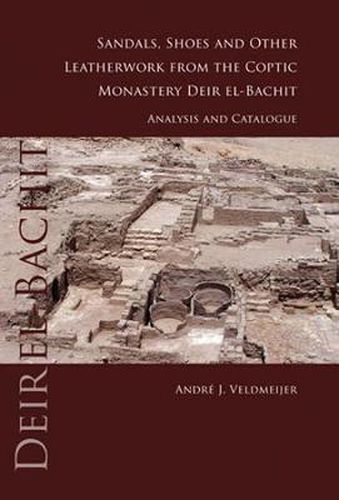Readings Newsletter
Become a Readings Member to make your shopping experience even easier.
Sign in or sign up for free!
You’re not far away from qualifying for FREE standard shipping within Australia
You’ve qualified for FREE standard shipping within Australia
The cart is loading…






The Coptic monastery and cemetery Deir el-Bachit stands on the hilltop of Dra’ Abu el-Naga, the well-known necropolis in Qurna (West Bank, Luxor). It is the largest Coptic monastery complex preserved in Western Thebes and the first monastery that has been systematically investigated. The excavation of the monastery was started as a DFG-Project des Agyptologischen Instituts der Ludwig-Maximilians-Universitat Muenchen in close collaboration with the Deutsches Archaologisches Institut Abteilung Kairo. Until the start of the investigations in 2001 with a survey, little research was done. After three seasons of preliminary research, full archaeological research was started in 2004. The leatherwork was studied in 2007, the present volume of which presents the results. The book consists of two parts: the analysis and a detailed catalogue, including colour images of all finds and, where necessary, line drawings. The finds are analysed within the framework of the excavation as well as within the frameworks of the Ancient Egyptian Leatherwork Project and the Ancient Egyptian Footwear Project (www.leatherandshoes.nl).
$9.00 standard shipping within Australia
FREE standard shipping within Australia for orders over $100.00
Express & International shipping calculated at checkout
The Coptic monastery and cemetery Deir el-Bachit stands on the hilltop of Dra’ Abu el-Naga, the well-known necropolis in Qurna (West Bank, Luxor). It is the largest Coptic monastery complex preserved in Western Thebes and the first monastery that has been systematically investigated. The excavation of the monastery was started as a DFG-Project des Agyptologischen Instituts der Ludwig-Maximilians-Universitat Muenchen in close collaboration with the Deutsches Archaologisches Institut Abteilung Kairo. Until the start of the investigations in 2001 with a survey, little research was done. After three seasons of preliminary research, full archaeological research was started in 2004. The leatherwork was studied in 2007, the present volume of which presents the results. The book consists of two parts: the analysis and a detailed catalogue, including colour images of all finds and, where necessary, line drawings. The finds are analysed within the framework of the excavation as well as within the frameworks of the Ancient Egyptian Leatherwork Project and the Ancient Egyptian Footwear Project (www.leatherandshoes.nl).